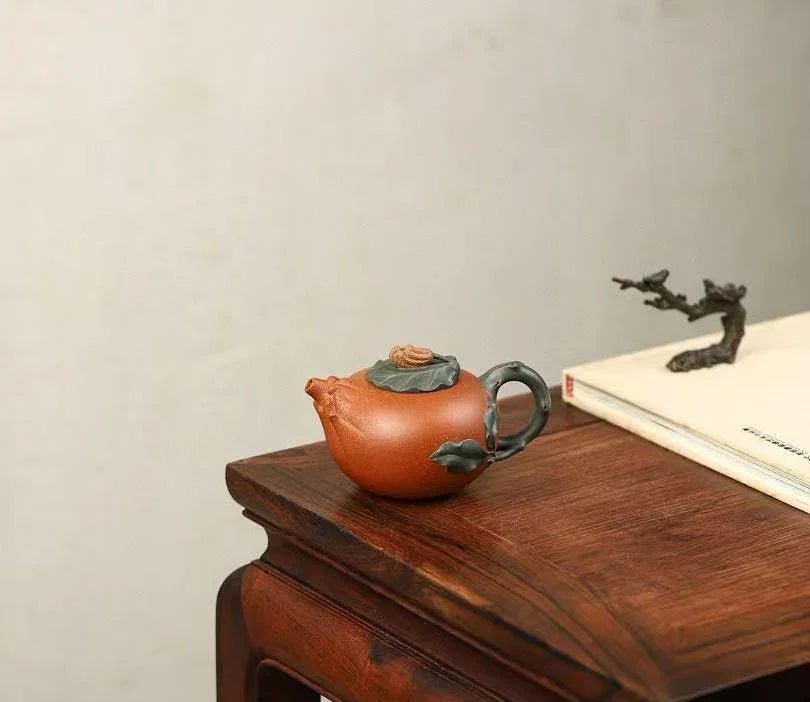
Aesthetician Zhang Shiying said: "There are four realms in life: the realm of desire, the realm of knowledge, the realm of morality, and the realm of aesthetics, and the realm of aesthetics is the highest realm." Inspired by Chinese aesthetics, seeking the experience of the flavor of tea in a purple clay teapot is also an aesthetic journey that concerns the soul.
Leave blank space. Zhuangzi said, "The empty room gives rise to whiteness." He also said, "Only the Tao is gathered in the void." The secret to the success of art lies in not seeking quantity or perfection, but seeking precision and meaning.

Chinese traditional culture believes in achieving more with less and using the virtual to represent the real. Although the blank space on the purple clay teapot is not painted with ink or decorated, it is not empty. Existence and non-existence, reality and illusion are mutually causal and complement each other. Ripples are heard in the void, which has the same artistic conception structure as traditional Chinese paintings.
In this regard, purple clay ware can better reflect the aesthetic taste of literati art that returns to simplicity and achieves more with less.

Square and circle. The "square and circle view" is one of the important contents of my country's traditional culture. Its essence is mainly reflected in: the cosmic cognition that the sky is round and the earth is square, the creation tendency of the form of ritual, the concept of dealing with the world in a square and circle manner, and metaphysical philosophical thinking.
There are various shapes of purple clay teapots, and almost all of them revolve around the changes and combinations of square and round. The proportion of square and round in purple clay teapots directly affects the aesthetic feeling that the teapot brings us. Therefore, it is not only a daily utensil, but also an important medium for Chinese people to think about the world, rituals, and how to deal with things.

Symmetry. From ancient times to the present, Chinese people have always pursued the symmetrical beauty in creation. In many cultural quintessences, we can see the inclusion of symmetrical elements.
The design system of purple clay teapots greatly contains this law of formal beauty. The purple clay teapots, which are mainly practical, have their center of gravity on the central axis. The spouts and handles on both sides are symmetrical, and are not limited to left and right, including the colors, tones, and structures of the upper and lower parts, just like the sun and the moon passing through the sky, the yin and yang balance, and the phoenixes flying together, spreading the beauty of the work in an orderly and regular form.

Details. Seeing the big from the small is the philosophical interest of details. As the saying goes, "few scenes but many meanings, small objects but long rhymes", the beauty of meticulously crafted details lies in the infinite emotions sought in the subtleties. The details are not noisy or ostentatious, but are like the finishing touch, often getting the true meaning of the three words "elegant", "wonderful" and "subtle".
Details show effort. There are too many examples to list, such as the "rise" of the pot lid, the "transition" between a reverse curve and a curve, the "turn" of the pause point of the pot shoulder, and the "close" to the bottom of the pot, and the proportional position of the knob spout, the water outflow, etc., all reflect the practical concept of the creation.

But the texture of a purple clay teapot is far from being expressed by a few cultural symbols. Similarly, the true meaning of Chinese aesthetics is not to provide a set of exquisite tea sets, but to provide people with a possible lifestyle. The height of lifestyle often affects the height of spirit and determines the height of taste. Perhaps this is the practical significance of Chinese aesthetics at present and in the future.


